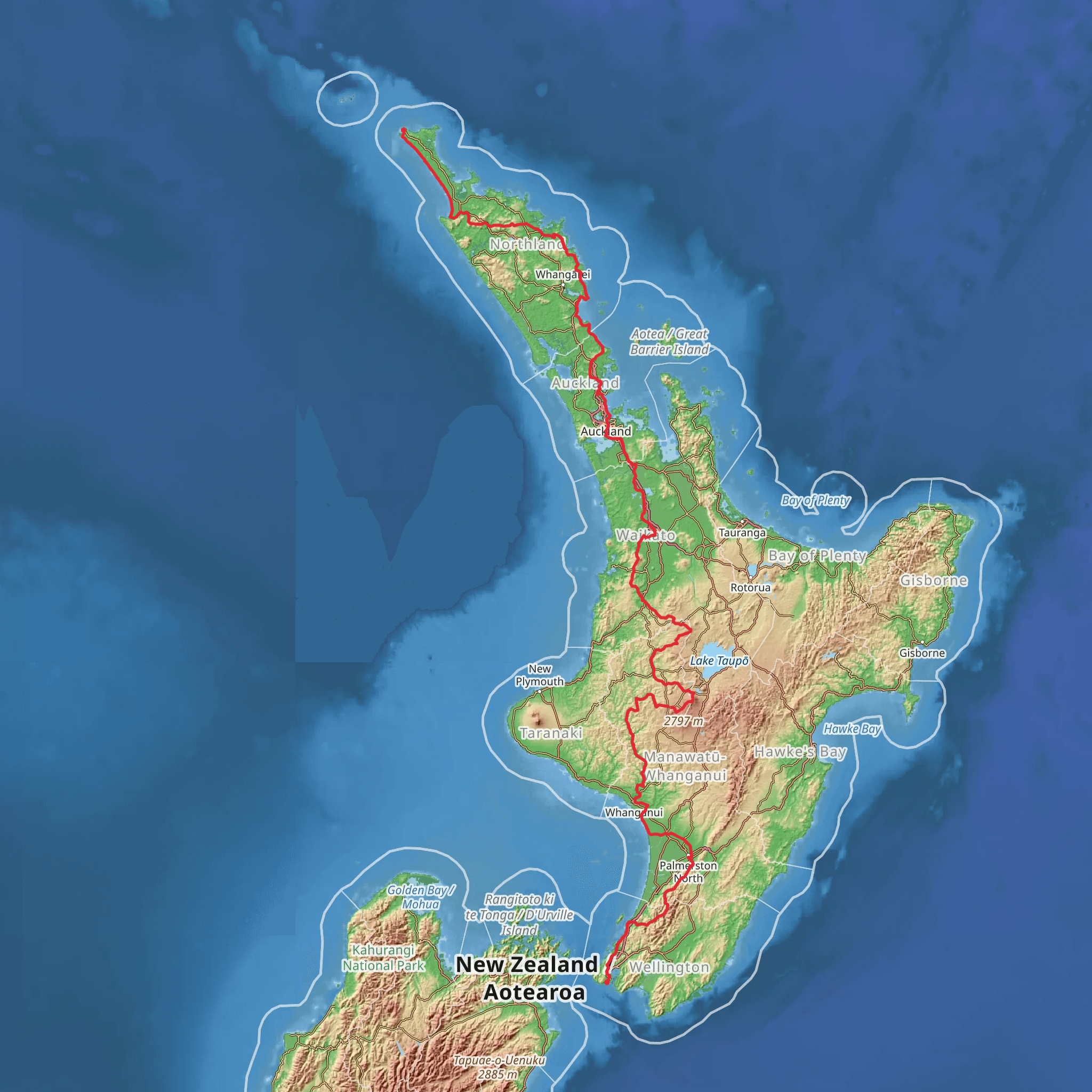Download
Preview
Add to list
More
1710.0 km
~95 days
36703 m
Multi-Day
“Te Araroa Trail: a transformative trek through New Zealand's soul-stirring natural and cultural tapestry.”
Embarking on the Te Araroa North Island trail, hikers will traverse approximately 1710 kilometers (1062 miles) of New Zealand's diverse landscapes, with an elevation gain of around 36700 meters (120,406 feet). This point-to-point trail begins near Cape Reinga at the northern tip of the island, a spiritually significant area for the Māori people, where the Tasman Sea meets the Pacific Ocean.
Getting to the Trailhead To reach the starting point, adventurers can drive to the end of Cape Reinga Road, which is well-signposted from State Highway 1. For those relying on public transport, options are limited due to the remote location, but seasonal tour buses do travel to Cape Reinga.
Trail Overview The journey starts with the descent from the lighthouse at Cape Reinga, offering sweeping ocean views. The trail then winds its way down Ninety Mile Beach, a long stretch of coastline that serves as both a highway and a runway, so hikers should be mindful of occasional traffic.
Northland Forests and Coastal Walkways After the beach, the trail enters the Herekino and Raetea Forests, where muddy tracks and dense native bush challenge even the most seasoned hikers. The Waipoua Forest, home to the ancient and towering kauri trees, is a highlight, providing a connection to New Zealand's natural history.
Auckland and the Volcanic Fields Upon reaching Auckland, the trail navigates urban settings, volcanic fields, and the Hunua Ranges. The city section offers a chance to resupply before tackling the volcanic cones, such as Mount Eden, which provide panoramic views of the cityscape.
The Waikato and King Country Moving south, the trail follows the Waikato River and crosses the verdant farmlands of the King Country. The Timber Trail in the Pureora Forest Park is a notable section, featuring suspension bridges and remnants of the logging industry.
Tongariro Alpine Crossing One of the most iconic sections is the Tongariro Alpine Crossing, a challenging alpine trek that passes through volcanic landscapes, emerald lakes, and offers views of Mount Ngauruhoe, famously known as Mount Doom from the "Lord of the Rings" films.
Whanganui River Journey The trail includes a unique river journey down the Whanganui River, where hikers trade their boots for paddles and navigate the waterways by canoe or kayak, experiencing the river's cultural and historical significance.
Tararua Ranges to Wellington The final push through the Tararua Ranges is a test of endurance with steep, rugged terrain. The trail concludes with a descent into Wellington, New Zealand's capital, where the North Island section of Te Araroa ends at the harbor, marked by the Wellington City i-SITE Visitor Centre on Wakefield Street.
Flora and Fauna Throughout the journey, hikers will encounter a rich tapestry of New Zealand's flora and fauna, from the kauri forests in the north to the tussock grasslands of the central plateau. Native birdlife, such as the tui and kereru, can be spotted, and the conservation areas offer a chance to learn about efforts to protect endangered species like the kiwi.
Preparation and Navigation Given the trail's length and varied terrain, thorough preparation is essential. Hikers should be equipped for all weather conditions and be self-sufficient, especially in remote sections. For navigation, the HiiKER app provides detailed maps and trail information to assist with route planning and on-trail guidance.
Historical Significance The Te Araroa North Island trail is not only a journey through nature but also a passage through New Zealand's history. From Māori cultural sites to early European settlements, hikers will walk paths that tell stories of the land and its people, offering a deeper understanding of the country's heritage.
This trail offers an immersive experience into the heart of New Zealand, challenging hikers with its varied landscapes while rewarding them with its natural beauty and cultural richness.
What to expect?
Activity types
Comments and Reviews
User comments, reviews and discussions about the Te Araroa North Island, New Zealand.
5.0
average rating out of 5
4 rating(s)

